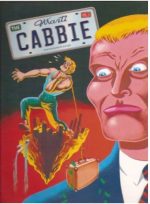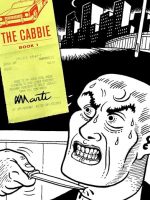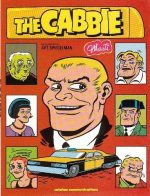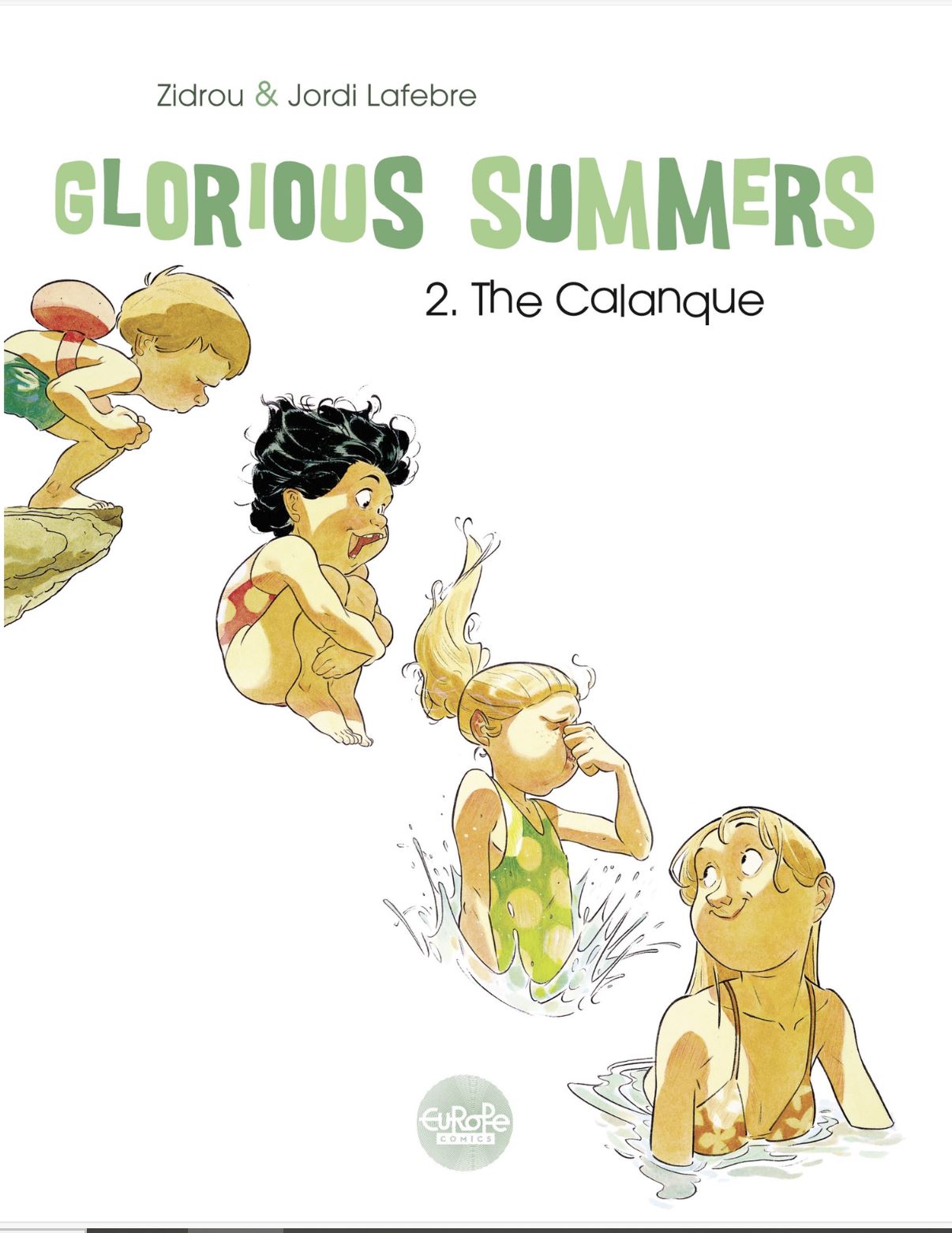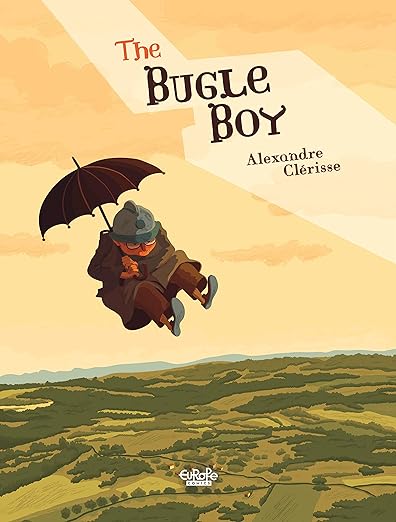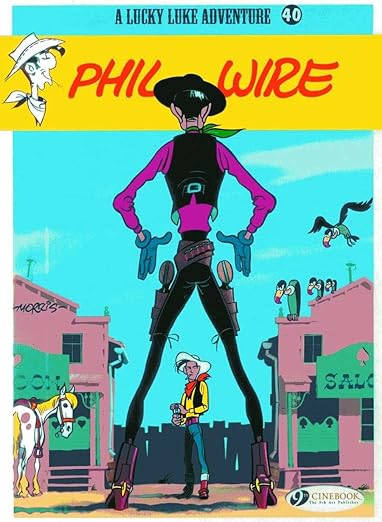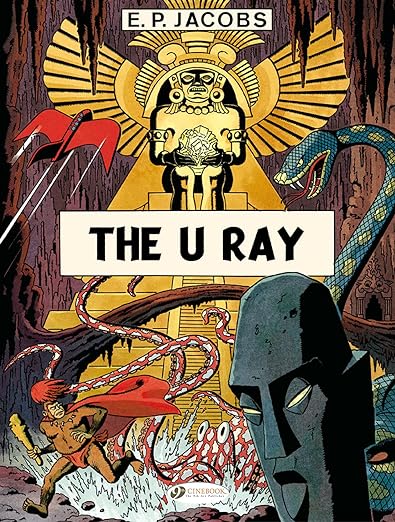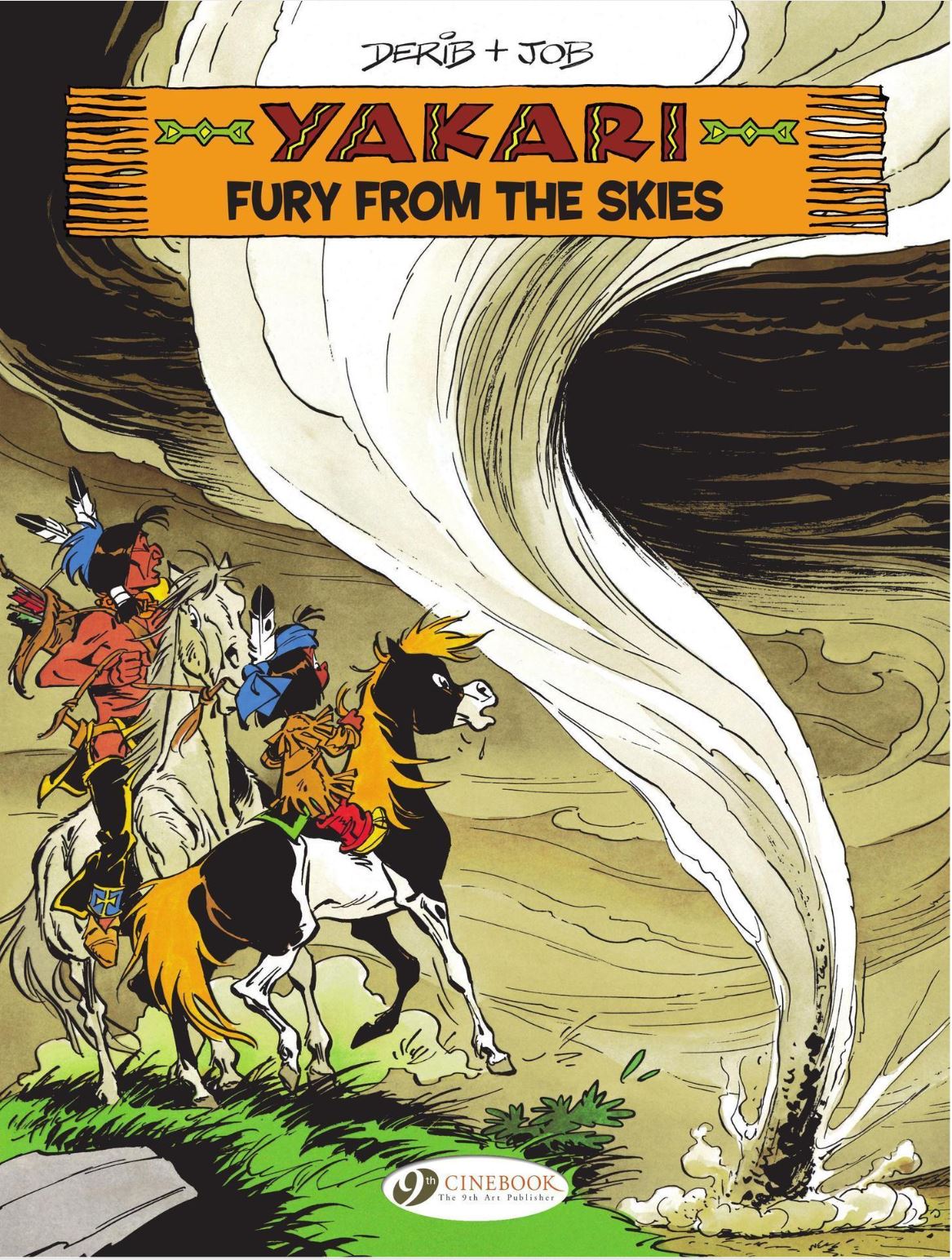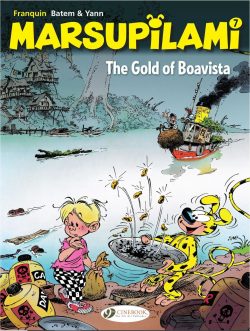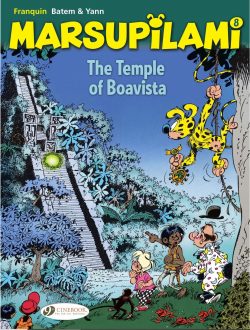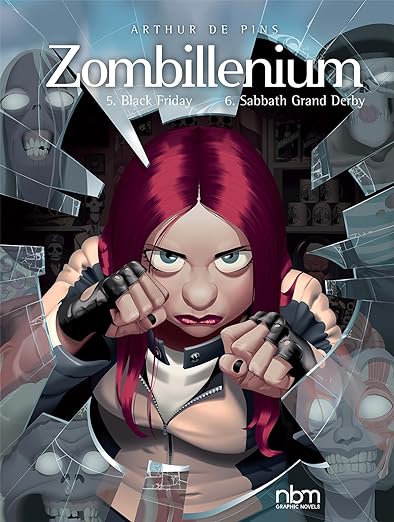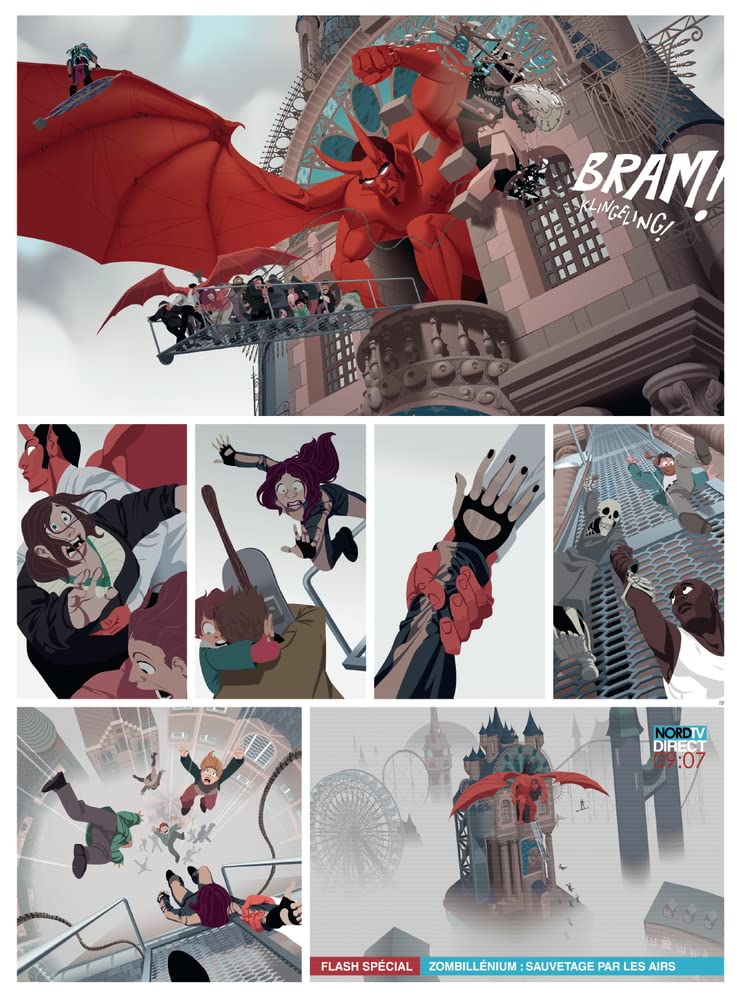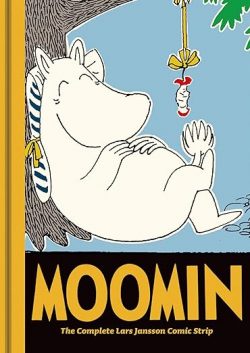
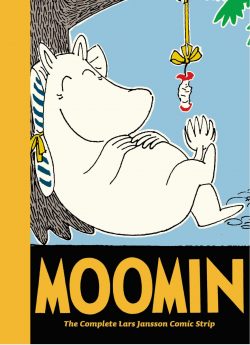
By Lars Jansson (Drawn & Quarterly)
ISBN: 978-1-77046-121-5 (HB) eISBN: 978-1-77046-555-8
Win’s Christmas Gift Recommendation: Magical Mirthful Manners Unbridled… 10/10
Tove Jansson was one of the greatest literary innovators and narrative pioneers of the 20th century: equally adept at shaping words and images to create worlds of wonder. She was especially expressive with basic components like pen and ink, manipulating economical lines and patterns into sublime realms of fascination, whilst her dexterity made simple forms into incredibly expressive and potent symbols. So was her brother…
Tove Marika Jansson was born into an artistic, intellectual and rather bohemian Swedish family in Helsinki, Finland on August 9th 1914. Patriarch Viktor was a sculptor and mother Signe Hammarsten-Jansson a successful illustrator, graphic designer and commercial artist. Tove’s brothers Lars – AKA “Lasse” – and Per Olov became – respectively – an author and cartoonist, and an art photographer. The family and its close intellectual, eccentric circle of friends seems to have been cast rather than born, with a witty play or challenging sitcom as the piece they were all destined to inhabit.
After extensive and intensive study (from 1930-1938 at the University College of Arts, Crafts and Design, Stockholm, Graphic School of the Finnish Academy of Fine Arts and L’Ecole d’Adrien Holy and L’Ecole des Beaux-Arts, Paris), Tove became a successful exhibiting artist through the troubled period of the Second World War.
Brilliantly creative across many fields, she published the first fantastic Moomins adventure in 1945. Småtrollen och den stora översvämningen (The Little Trolls and the Great Flood or latterly and more euphoniously The Moomins and the Great Flood) was a whimsical epic of gentle, inclusive, accepting, understanding, bohemian misfit trolls and their strange friends…
A youthful over-achiever, from 1930-1953 Tove had worked as an illustrator and cartoonist for the Swedish satirical magazine Garm: achieving some measure of notoriety with an infamous political sketch of Hitler in nappies that lampooned the Appeasement policies of European leaders in the build-up to WWII. She was also an in-demand illustrator for many magazines and children’s books, and had started selling comic strips as early as 1929.
Moomintroll was her signature character. Literally.
The lumpy, big-eyed, gently adventurous romantic goof began as a spindly sigil next to her name in her political works. She called him “Snork” and claimed she had designed him in a fit of pique as a child – the ugliest thing a precocious little girl could imagine – as a response to losing an argument with her brother about Immanuel Kant.
The term “Moomin” came from her maternal uncle Einar Hammarsten who attempted to stop her pilfering food when she visited, warning her a Moomintroll guarded the kitchen, creeping up on trespassers and breathing cold air down their necks. Snork/Moomin filled out, became timidly nicer – if a bit clingy and insecure – acting as a placid therapy-tool to counteract the grimness of the post-war world.
The Moomins and the Great Flood didn’t make much of an initial impact but Jansson persisted, probably as much for her own edification as any other reason, and in 1946 second book Kometjakten (Comet in Moominland) was published. Many commentators believe the terrifying tale a skilfully compelling allegory of Nuclear Armageddon. You should read it now… while you still can…
When it and third illustrated novel Trollkarlens hatt (1948, Finn Family Moomintroll or sometimes The Happy Moomins) were translated into English in 1952 to great acclaim, it prompted British publishing giant Associated Press to commission a newspaper strip about her seductively sweet and sensibly surreal creations.
Jansson had no misgivings or prejudices about strip cartoons and had already adapted Comet in Moominland for Swedish/Finnish paper Ny Tid. Mumintrollet och jordens undergäng – Moomintrolls and the End of the World – was a popular feature so Jansson readily accepted the chance to extend her eclectic family across the world. In 1953, The London Evening News began the first of 21 Moomin strip sagas which promptly captivated readers of all ages. Jansson’s involvement in the cartoon feature ended in 1959, a casualty of its own success and a punishing publication schedule. So great was the strain that she recruited brother Lars to help. He took over, continuing the feature until its end in 1975. His tenure as sole creator officially resumes here…
Liberated from cartooning pressures, Tove returned to painting, writing and other pursuits: generating plays, murals, public art, stage designs, costumes for dramas and ballets, a Moomin opera and 9 more Moomin-related picture-books and novels, as well as 13 books and short-story collections strictly for grown-ups.
Tove Jansson died on June 27th 2001. Her awards are too numerous to mention, but just think: how many modern artists get their faces on the national currency?
Lars Fredrik Jansson (October 8th 1926 – July 31st 2000) was just as amazing as his sister. Born into that astounding clan 12 years after Tove, at 16 he started writing – and selling – his novels (nine in total). He also taught himself English because there weren’t enough Swedish-language translations of books available for his voracious reading appetite.
In 1956, he began co-scripting the Moomin strip at his sister’s request: injecting his own witty whimsicality to ‘Moomin Goes Wild West’. He had been Tove’s translator from the start, seamlessly converting her Swedish text into English. In 1959, her contract with The London Evening News expired and Lars officially took over, having spent the interim period learning to draw and perfectly mimic his sister’s art style. He had done so in secret, assisted and tutored by their mother Signe Hammarsten-Jansson. From 1961 to strip’s end in 1974, Lars was sole steersman of the newspaper iteration of trollish tails.
Lasse was also a man of many parts. Other careers included aerial photographer, professional gold miner, writer and translator. He was basis and model for the cool kid Snufkin…
Lars’ Moomins was subtly sharper than his sister’s version and he was far more in tune with the quirky British sense of humour, but his whimsy and wry sense of wonder was every bit as compelling. In 1990, long after the original series, he began a new career, working with Dennis Livson (designer of Finland’s acclaimed theme park Moomin World) as producers of anime series The Moomins and – in 1993 with daughter Sophia Jansson – on new Moomin strips…
Moomintrolls are easy-going free spirits: modern bohemians untroubled by hidebound domestic mores but under Lars, increasingly diverted and distracted by societal pressures. Moominmama is warm, kindly tolerant and capable if perhaps overly concerned with propriety and appearances whilst devoted spouse Moominpappa spends most of his time trying to rekindle his adventurous youth or dreaming of fantastic journeys.
Their son Moomin is a meek, dreamy boy with confusing ambitions. He adores and moons over permanent houseguest the Snorkmaiden – although that impressionable, flighty gamin prefers to play things slowly whilst waiting for somebody potentially better…
A particularly wry affair, this 8th monochrome compilation revisits serial strip sagas #30-33, opening with Lars fully in charge and revealing how a near-fatally bored young Moomintroll drags the entire clan and clingers-on across the oceans to become ‘Moomin Family Robinson’. Wracked by sameness and tedium whilst simultaneously beguiled by charismatic, enigmatic Snufkin, he convinces the Snorkmaiden to run away to sea with him…
Before long the cruise liner stowaways are caught and cast adrift. Their problems only grow once they reach land and wash ashore on a private beach. Naturally, when mama and papa take ship after them everything instantly gets even worse. If only they didn’t keep looking for Man Friday. But wasn’t that an entirely different book?
Ultimately restored to their proper place, more unsavoury antics by unscrupulous barbarian Stinky lead to the assembled Moomins accidentally winning a prestigious photographic competition and becoming ‘Artists in Moominvalley’.
Along with the prize comes a literal horde of creative glitterati of varying degrees of talent and renown, all seeking the incredible sight the amateurs captured on film. All too soon, the fancy-schmancy, self-congratulatory in-crowd are pompously transforming the quiet valley into an appalling floating “art colony” that only Moominpapa’s urgent need to join has any hope of destroying…
Conman, venal chancer and annoying persistent associate Sniff again involves – or more accurately “implicates” – the whole family by helping himself to their beach front to build a ramshackle resort packed full of annoyingly needy paying holidaymakers before absconding. Leaving the inexplicably guilt-struck Moomins to manage ‘Sniff’s Holiday Camp’ generates chaos and the tried-&-true British middle class sitcom manner but thankfully – and also just like the UK – Moominvalley suffers from “weather”…
Crime, punishment and even more embarrassment accompanies ‘The Inspector’s Nephew’ after a drunken young wastrel becomes enamoured of rural crime busting and replaces idleness with over-imagination and zealousness. On the trail of skulduggery and early promotion, the likely lad soon targets the genteel Moomin family as kingpins in an empire of extortion, dope dealing (!), rum smuggling and more. Thankfully, his harassed uncle will do anything to restore calm to the valley…
This compilation closes with a closer look at the creator in ‘Lars Jansson: Roll Up Your Sleeves and Get to Work’ courtesy of family biographer Juhani Tolvanen, extolling his many worthy attributes…
These are truly magical tales for the young, laced with the devastating observation and razor-sharp mature wit which enhances and elevates only the greatest kids’ stories into classics of literature. These volumes – both Tove and Lars’ – are an international treasure trove no fan of the medium – or carbon-based lifeform with even a hint of heart and soul – can afford to be without.
© 2013 Solo/Bulls. “Lars Jansson: Roll Up Your Sleeves and Get to Work” © 2011/2013 Juhani Tolvanen. All rights reserved.
